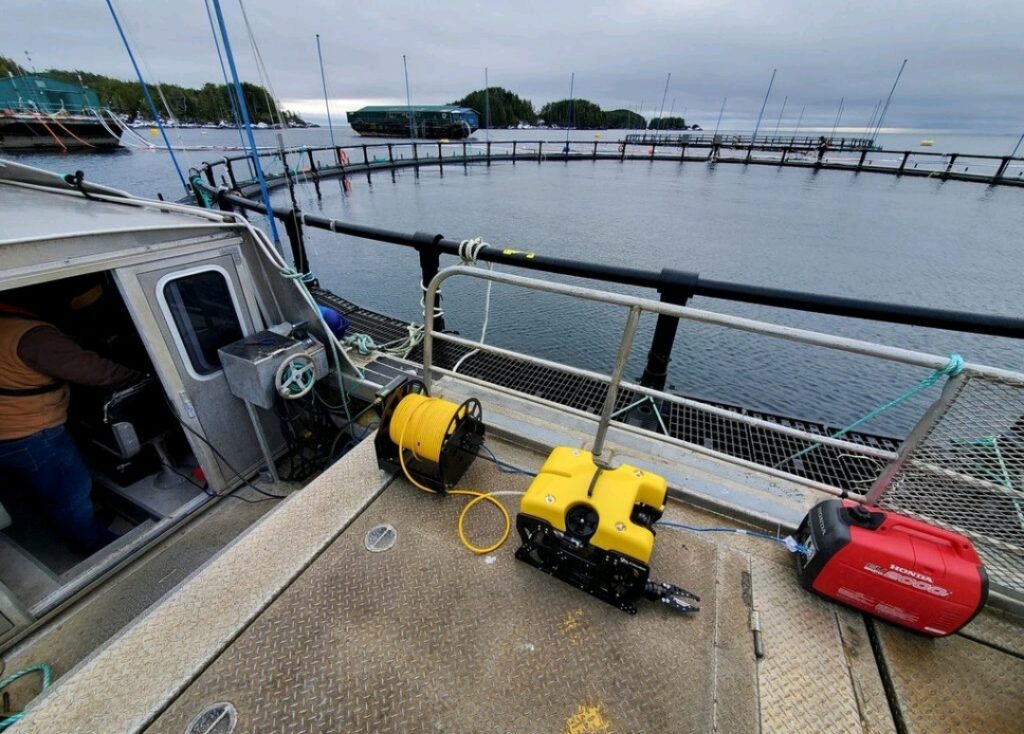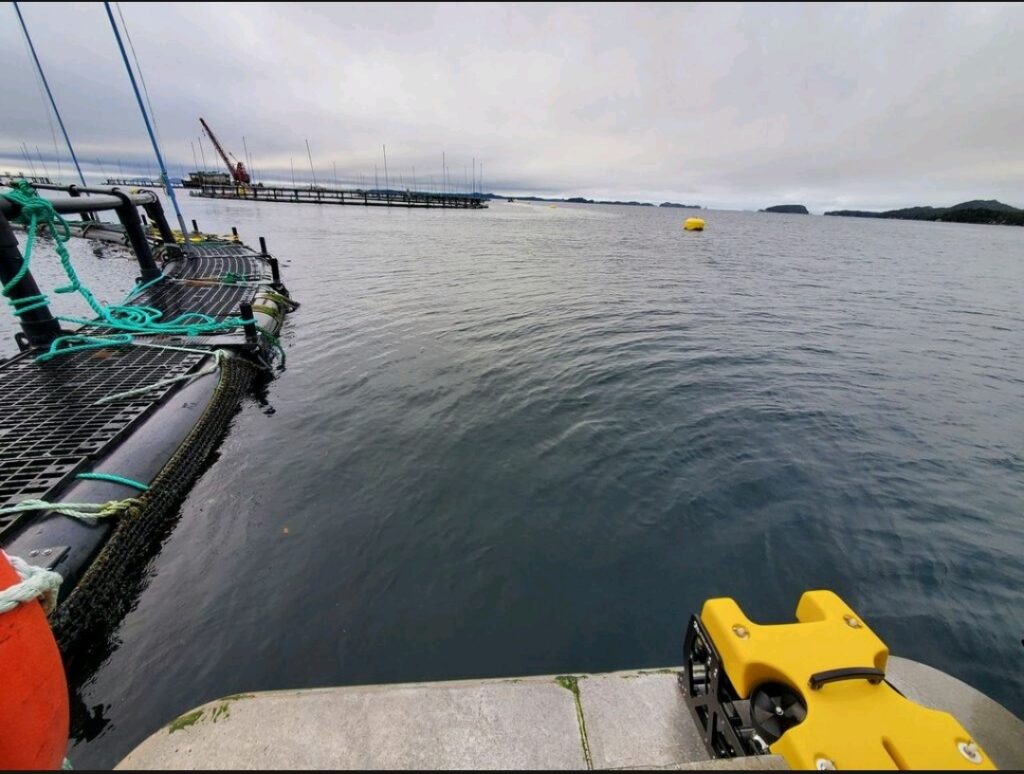Remotely operated vehicles (ROVs) are active in the aquaculture industry, completing a variety of tasks. Some of these tasks include the monitoring and inspecting of the farms and water quality, and deploying and maintaining equipment. The use of ROVs in aquaculture over traditional methods provide many benefits. ROVs can operate in challenging environments, such as deep waters or harsh weather conditions, and they can collect data in a non-intrusive way, so as to not disturb the fish.
ROVs are good for our health?
Scottish fish farms are rumored to have been one of the first to use ROVs in 1990s. The industry and the technology has grown since then. Learning about the marine or aquatic environment, alongside which aquaculture farms run, can help us protect both the wild and farmed animals and plants.
Yes, you read that right, aquaculture is about more than the salmon on your plate. More on that to come in another post. For now, it is important to remember that ROVs can improve our knowledge of the natural environment. This knowledge helps build and run aquaculture farms. ROVs help farmers comply with economic, safety, and environmental policies and laws. ROVs can also be used in the monitoring of animal behavior, animal health, water quality, and equipment functioning. And they can jump in for minor repairs when necessary.
Animal health and welfare is increasingly recognized as vital to sustain profitability in aquaculture. Keeping your animals healthy can be a challenge. Increasing water temperatures, toxic algal blooms, diseases, pollution and parasite booms are all growing concerns. As consumers of the animals grown in aquaculture farms, human health is closely tied in to the health of the animals. Some of these challenges are part of the trade and need to be managed. However, others are brought about as by-products of climate change and other harmful human behaviours.
ROVs can be equipped with tools such as gripper arms, cameras, sonars, and sensors. ROV pilots perform this wide range of maintenance, monitoring, and repair tasks, together with the specialized tools, to ensure a healthy farm and a healthy environment.
ROV 20/20 Vision
ROVs are now becoming increasingly autonomous, which will allow them to perform tasks more efficiently and effectively, even in harsh and remote environments. For example, some ROVs can navigate silty waters using sonar and other sensors. They work with 20/20 vision that does not rely on a camera or human eyes.
SEAMOR ROVs are built so that you can customize them with the tools YOU need. So, what would you need to run your farm more effectively, efficiently and cost-friendly? We can provide you with 20/20 ROV vision too. 😉
In the future, ROVs will likely become more integrated with other technologies. Maybe machine learning in ROVs is not too far on the horizon? This will allow ROVs to more effectively monitor and analyze data from fish farms, and even make decisions autonomously based on that data. Furthermore, the combination of ROVs with other technologies, such as drones and intelligent cameras, and humans, will allow for more comprehensive and efficient monitoring of fish farms.

Case-Study Example
Check out one of our case studies if you are interested in a more concrete example. SEAMOR ROVs are perfectly streamlined for the necessary compliance checks. The local and international regulations that apply to your farm may vary. The environment in which your farm is located may also vary but we all need to collect similar data to make the best decisions for the safety of the business, the people, and nature. ROVs are the versatile, little, helpers that can help you do your best work.
The take-aways from this short post on ROVs in aquaculture are as follows:
- ROVs are important tools in aquaculture farms (but be sure to pick one of high quality with the tools you need, get in touch to find out how we can help)
- ROVs are able to monitor the natural environment whether it be open ocean, shallow bays, or lakes. ROVs aid us in our understanding of which actions are necessary to maintain animal and plant health of both wild and farmed species.
- ROVs are continuously improving so get on that bandwagon now and help your farm grow with the technology.
- ROVs can do things humans cannot.
We are looking forward to our next aquaculture post, hopefully you are too.

